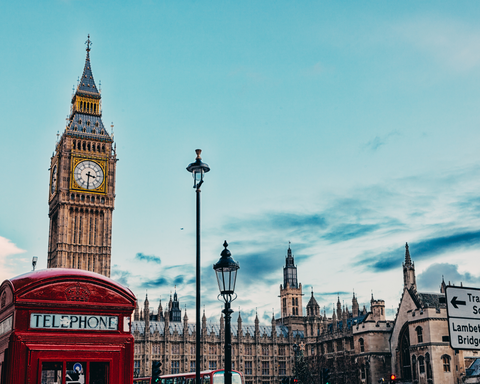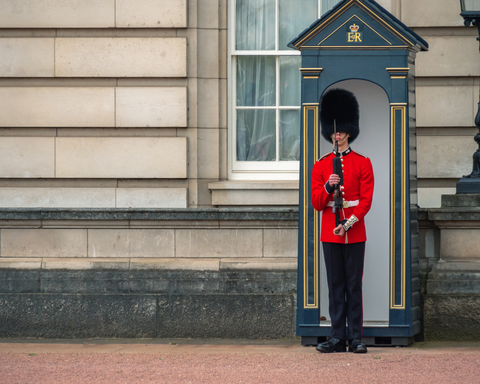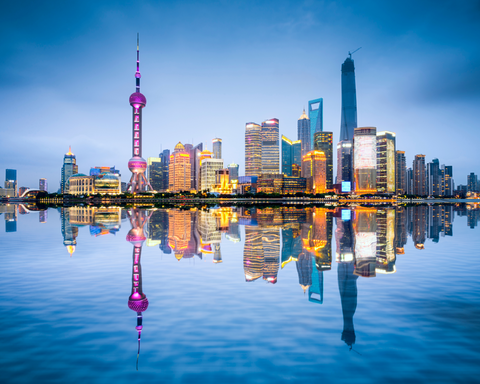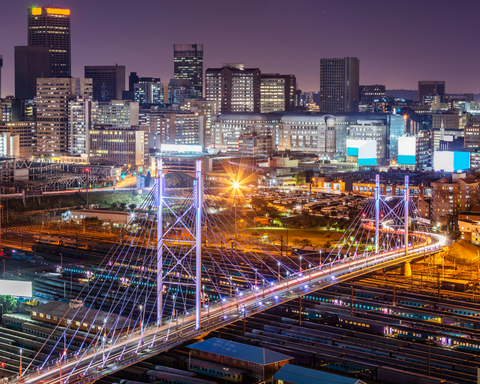In fashion, three cities have historically stood out as the epicentres of style, innovation, and influence: Paris, Milan, and New York.
These cities, often referred to as the "Big Three," have been the birthplaces of countless fashion trends, the homes of iconic fashion houses, and the stages for some of the most prestigious fashion weeks in the world.
With its romantic allure, Paris has given us the elegance of haute couture.
Milan, known for its luxury and craftsmanship, has been the cradle of Italian sartorial excellence.
And New York, the city that never sleeps, has blended the edgy with the sophisticated, reflecting its diverse and bustling nature.
However, as the world becomes more interconnected and cultures continue intertwining, we must broaden our horizons and recognise the burgeoning fashion capitals making significant waves in the industry. From the eclectic streets of London to the avant-garde spirit of Tokyo, numerous cities are challenging the traditional fashion hierarchy and redefining what it means to be a global fashion hub.
By diversifying our view and embracing these emerging capitals, we not only celebrate the rich tapestry of global fashion but also acknowledge the evolving dynamics of an industry that never stands still.

I. London: The Eclectic Mix of Tradition and Innovation
History of Fashion in London
With its rich history and diverse culture, London has always been a melting pot of fashion influences. From the opulent garments of the Tudor court to the rebellious punk movement of the 1970s, the city has witnessed a myriad of fashion evolutions. The 1960s, in particular, marked a significant era for London fashion with the emergence of the "Swinging Sixties."

Designers like Mary Quant introduced the world to the mini-skirt, and Carnaby Street became the go-to destination for the latest trends. This era solidified London's status as a fashion capital and showcased its ability to blend tradition with groundbreaking innovation.

Influence of British Royalty on Fashion Trends
The British monarchy has played an undeniable role in shaping fashion trends, both in the UK and abroad. From Queen Elizabeth I's elaborate ruffs and Queen Victoria's mourning attire to Princess Diana's modern and chic style, the royals have been trendsetters in their own right. The recent global fascination with the Duchess of Cambridge, Kate Middleton, and the Duchess of Sussex, Meghan Markle, further underscores the influence of British royalty. Their sartorial choices often lead to the "Kate effect" or "Meghan effect," where items they wear sell out instantly, highlighting the power of royal endorsement in the fashion world.
London Fashion Week and Its Global Impact

Established in 1984, London Fashion Week (LFW) has grown to become one of the "Big Four" fashion weeks alongside New York, Milan, and Paris. Twice a year, the city becomes a fashion frenzy, with designers, models, and fashion enthusiasts flocking to see the latest collections. LFW is renowned for its diverse range of designers, from established brands like Burberry and Vivienne Westwood to emerging talents fresh out of fashion schools. This mix of tradition and innovation is what sets LFW apart. Moreover, with initiatives like the Positive Fashion Exhibition, the event's commitment to sustainability and inclusivity showcases London's forward-thinking approach and its significant impact on the global fashion narrative.

II. Tokyo: The Epicenter of Avant-Garde and Street Style
The Rise of Harajuku Fashion
Nestled in the heart of Tokyo, the Harajuku district has become synonymous with eclectic and avant-garde fashion. Emerging in the 1980s and gaining significant traction in the 1990s, Harajuku fashion is characterised by its vibrant colours, mix-and-match patterns, and a blend of traditional Japanese elements with Western influences. The style is not confined to one look; from Lolita and Visual Kei to Gyaru and Decora, Harajuku fashion encompasses various subcultures. Takeshita Street, the district's main shopping street, is a visual feast, with fashion enthusiasts donning their unique styles, making it a street-style photographer's paradise.
Influence of Japanese Designers on the Global Stage
Japanese designers have long been revered in the global fashion industry for their meticulous craftsmanship, innovative techniques, and unique aesthetic. Designers like Issey Miyake, with his pleated designs, and Rei Kawakubo of Comme des Garçons, known for her avant-garde and often deconstructed pieces, have challenged conventional fashion norms. Yohji Yamamoto's oversized silhouettes and Kenzo Takada's fusion of Japanese and European styles are further testaments to the profound impact of Japanese designers. Their ability to seamlessly blend tradition with modernity has made them staples in international fashion weeks and favourites among fashion lovers worldwide.
Tokyo Fashion Week and Its Unique Showcases
Officially known as Rakuten Fashion Week TOKYO, Tokyo Fashion Week is a biannual event celebrating Japanese fashion's best. While it might have a different history than its European counterparts, it compensates with its fresh perspective and unparalleled creativity. The event is a platform for established designers and emerging talents, offering diverse collections that often blur the lines between art and fashion. From technologically advanced fabrics to shows that are more performance art than traditional runway, Tokyo Fashion Week continually pushes the boundaries of what fashion can be. Its unique showcases highlight the ingenuity of Japanese designers and solidify Tokyo's position as a leading fashion capital in the world.

III. Los Angeles: The Fusion of Hollywood Glamour and Casual Chic
The Role of Hollywood in Shaping Fashion Trends
Hollywood, the world's entertainment capital, has been a significant force in shaping global fashion trends. Hollywood's influence is undeniable from the golden age of cinema, where stars like Audrey Hepburn, Marilyn Monroe, and James Dean set the sartorial standards for modern-day red carpet events. Iconic film costumes, whether the white halter dress from "The Seven Year Itch" or the sharp suits of "Reservoir Dogs," have often transcended the screen to influence everyday fashion. Moreover, celebrities, with their stylists and access to top designers, often debut fashion-forward looks during award seasons, setting trends that ripple through the industry and influence consumer choices.
The emergence of LA as a Hub for Sustainable and Eco-Friendly Fashion
Los Angeles has emerged as a frontrunner in the sustainable fashion movement in recent years. With California's ethos of environmental consciousness, many LA-based brands and designers have championed eco-friendly practices. From using organic and recycled materials to adopting ethical manufacturing processes, the city's fashion scene increasingly reflects a sustainability commitment. Brands like Reformation, Christy Dawn, and Patagonia paved the way, proving that style and sustainability coexist. This shift is not just limited to niche brands; even high-end designers and boutiques in LA are increasingly incorporating sustainable practices, making it a core part of the city's fashion identity.
LA Fashion Week and Its Blend of Celebrity and Runway Styles
Though younger than its global counterparts, Los Angeles Fashion Week offers a unique blend of high fashion and celebrity culture. The event often sees a fusion of traditional runway shows with the glitz and glamour associated with Hollywood. Designers showcase collections that range from avant-garde to ready-to-wear, catering to the city's diverse fashion palate. The presence of celebrities on the runway and in the front row adds a layer of allure to the event. Moreover, LA Fashion Week has become a platform for highlighting local talent, promoting inclusivity, and showcasing sustainable fashion in line with the city's ethos. The event encapsulates the essence of Los Angeles – a harmonious blend of glamour, casual chic, and a forward-thinking approach to style.

IV. Seoul: The Meteoric Rise of K-Fashion
Influence of K-pop and Korean Dramas on Fashion
With its global fanbase and dynamic performances, K-pop has been a significant driver of South Korean fashion trends. Idols and groups, with their distinct and often avant-garde styles, set the tone for millions of fans worldwide. From the oversized shirts of BTS to the chic ensembles of BLACKPINK, the fashion choices of these stars often become instant trends. Beyond music, Korean dramas also play a pivotal role. The outfits worn by lead characters, whether in historical dramas or modern rom-coms, often spark shopping frenzies and inspire fashion collections.
The Balance of Traditional Hanbok Inspirations with Modern Designs
The Hanbok's elegant lines and vibrant colors symbolise Korean tradition. Modern Korean designers, while embracing global trends, often turn to the Hanbok for inspiration. This fusion of the traditional with the contemporary has given rise to unique designs that resonate domestically and internationally. By reinterpreting the classic silhouettes, fabrics, and patterns of the Hanbok, brands and designers have created wearable pieces while evoking the essence of Korean heritage.
Seoul Fashion Week and Its Global Reach
Seoul Fashion Week, held biannually, is a testament to South Korea's burgeoning fashion industry. The event showcases a mix of established designers and emerging talents, reflecting the country's dynamic fashion landscape. With its cutting-edge designs, innovative technology (like virtual reality runways), and a keen sense of global trends, Seoul Fashion Week has garnered attention from international media, buyers, and fashion enthusiasts. The event highlights the creativity and craftsmanship of Korean designers and solidifies Seoul's position as a major player in the global fashion arena. The international collaborations, celebrity appearances, and the influx of global influencers further amplify its reach, making it a must-watch event in the fashion calendar.

V. Shanghai: Bridging the East and West
The Resurgence of Chinese Fashion and Its Historical Roots
With its millennia-old civilisation, China has a rich tapestry of fashion history. From the Tang Dynasty's intricate embroideries to the Qipao's elegance in the 1920s, Chinese fashion has always reflected its cultural and societal evolution. In recent years, there's been a resurgence in the appreciation of traditional Chinese style, with modern designers drawing inspiration from ancient aesthetics. As the country's fashion capital, Shanghai has been at the forefront of this movement, blending historical motifs with contemporary designs, creating a unique style that pays homage to the past while looking to the future.
Influence of Shanghai on Luxury Fashion Brands
Shanghai's rapid economic growth and cosmopolitan populace have made it a hotspot for luxury fashion brands. With their penchant for high-end fashion, the city's affluent consumers have attracted luxury houses from around the world. Brands like Chanel, Louis Vuitton, and Gucci have set up flagship stores in Shanghai and incorporated Chinese elements into their collections, underscoring the city's influence. Furthermore, Shanghai's role as a global financial hub has facilitated collaborations between local designers and international brands, creating a symbiotic relationship that benefits the global fashion ecosystem.
Shanghai Fashion Week and Its Role in Promoting Local Designers
Shanghai Fashion Week, held biannually, is a celebration of both international trends and local talent. The event has grown exponentially, drawing attention from global media, influencers, and fashion industry professionals. While international brands often showcase their collections, the true stars of Shanghai Fashion Week are the local designers. With a platform to present their creations to a global audience, these designers bring a fresh perspective, often rooted in Chinese culture, to the runway. Initiatives within the event, like the SHFW Emerging Designer Award, further spotlight up-and-coming talent, ensuring that the future of Chinese fashion remains bright. The event's emphasis on sustainability, technology, and innovation mirrors Shanghai's ethos, accurately representing the city's place in the global fashion landscape.

VI. Sao Paulo: The Vibrant Heart of South American Fashion
The Colorful and Diverse Fashion Scene of Brazil
Brazil, with its rich cultural tapestry and diverse landscapes, has a fashion scene as vibrant and varied as its festivals. From the beachwear of Rio de Janeiro, epitomised by the iconic bikini, to the Amazon-inspired prints and fabrics, Brazilian fashion reflects its people, geography, and history. The country's Afro-Brazilian heritage, indigenous roots, and Portuguese influences combine to create a unique sartorial blend. Bright colours, bold patterns, and a flair for the dramatic define Brazilian fashion, making it instantly recognisable globally.
Sao Paulo's Role in Introducing Brazilian Fashion to the World
Sao Paulo, Brazil's largest city and economic hub, has played a pivotal role in catapulting Brazilian fashion to international acclaim. With its cosmopolitan populace and thriving arts scene, the city has become the epicentre of Brazil's fashion industry. Like Oscar Freire Street, Sao Paulo's fashion districts are lined with boutiques showcasing the best Brazilian design, from haute couture to streetwear. Furthermore, Sao Paulo's position as a business hub has facilitated collaborations between Brazilian designers and international brands, allowing for a fusion of styles and ideas.
Sao Paulo Fashion Week and Its Celebration of Cultural Diversity
Established in 1996, Sao Paulo Fashion Week (SPFW) is Latin America's most influential fashion event and has become a significant fixture in the global fashion calendar. The city comes alive twice a year with fashion shows, exhibitions, and events that attract designers, models, and fashion enthusiasts worldwide. SPFW is a showcase of the latest trends and a celebration of Brazil's cultural diversity. Designers often draw inspiration from the country's varied regions, from the carnival spirit of Bahia to the indigenous tribes of the Amazon. This blend of traditional and contemporary, local and global, makes SPFW a unique event that truly encapsulates the spirit of Brazilian fashion. The emphasis on inclusivity, with models of all backgrounds, sizes, and ages, further sets SPFW apart, making it a beacon of progressiveness in the fashion world.

VII. Johannesburg: Africa's Rising Fashion Star
The Rich Tapestry of African Fabrics and Designs
With its vast cultural diversity and history, Africa has a wealth of fabrics and designs that tell stories of tribes, traditions, and transitions. African fashion is a visual narrative from the intricate beadwork of the Maasai to the vibrant Kente cloth of Ghana. As a melting pot of various African cultures, Johannesburg has embraced this rich tapestry, making it a central theme in its fashion scene. The city's designers often incorporate traditional fabrics like Shweshwe and Mudcloth into contemporary designs, creating a timeless and modern fusion.
Johannesburg's Role in Promoting African Designers on the Global Stage
As one of Africa's major urban centres, Johannesburg has positioned itself as the continent's fashion capital. With its thriving arts and fashion scene, the city has become a launchpad for African designers seeking global recognition. Johannesburg's fashion events, boutiques, and schools have nurtured and showcased talent from across the continent, allowing African designers to share their unique perspectives with the world. The city's emphasis on collaboration and community has created a supportive ecosystem where designers can thrive and innovate.
Johannesburg Fashion Week and Its Focus on Sustainable Fashion
Johannesburg Fashion Week, a highlight in the city's fashion calendar is more than just a showcase of the latest trends. The event strongly emphasises sustainability, reflecting a broader movement within the African fashion industry. Designers are increasingly turning to eco-friendly materials, ethical manufacturing processes, and upcycling, aligning with global efforts to make fashion more sustainable. The event also champions local artisans and traditional crafts, ensuring that the roots of African fashion are preserved while adapting to modern sensibilities.
The Importance of Recognising and Celebrating Diverse Fashion Capitals
In an increasingly globalised world, fashion is no longer confined to a few traditional capitals. Cities from every continent are making their mark, bringing fresh perspectives, cultures, and innovations. Recognising and celebrating these diverse fashion hubs is crucial for the industry's growth and fostering global unity and understanding.
The Interconnectedness of the Global Fashion Industry
Fashion, at its core, is a reflection of society, culture, and history. As the industry becomes more interconnected, embracing the contributions of every fashion capital, from the established to the emerging, is essential. This interconnectedness enriches the global fashion narrative, making it more inclusive, diverse, and representative of our world.



